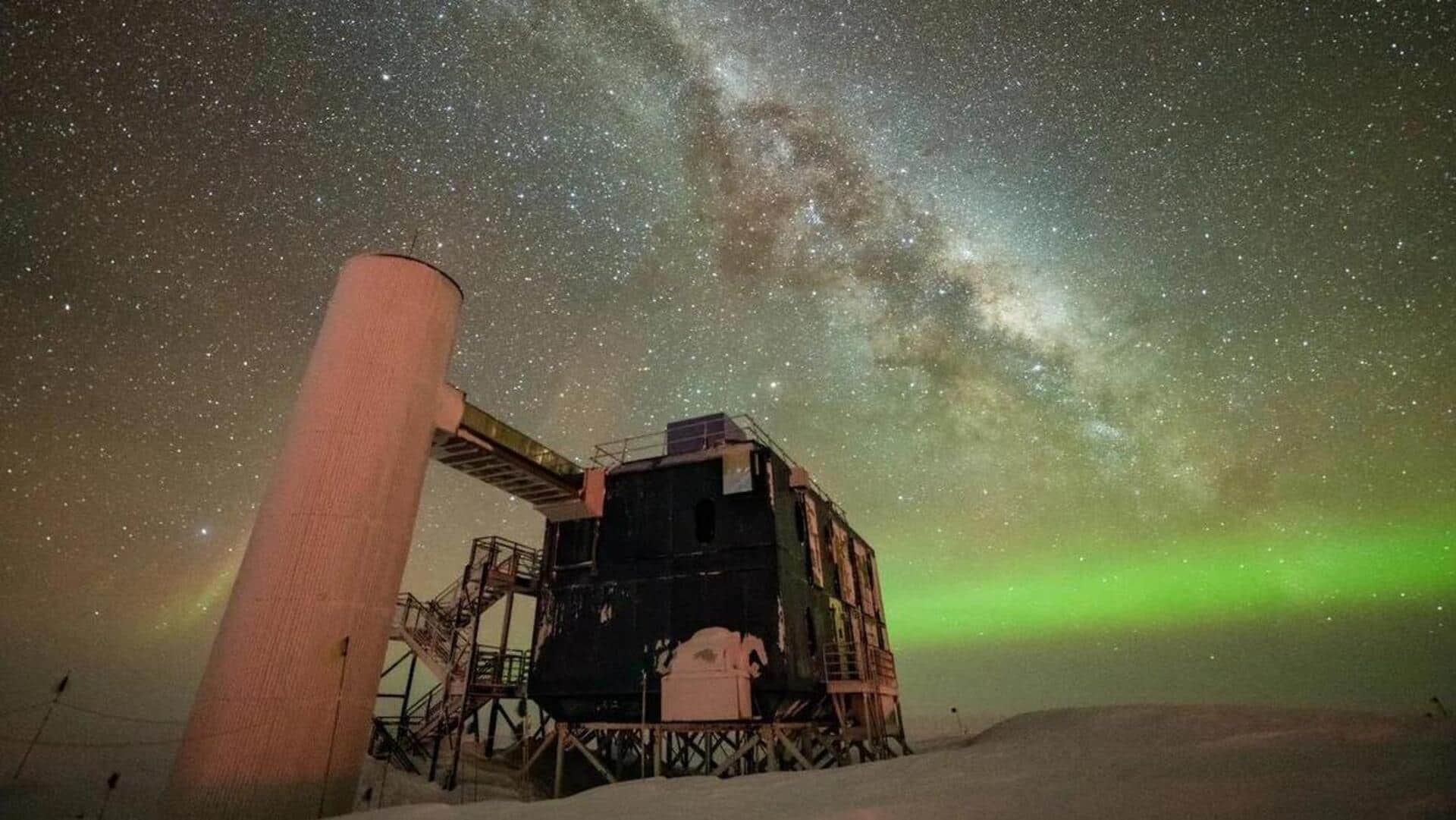
In a first, scientists detect neutrino emission within Milky Way
What's the story
For the first time, astronomers have detected high-energy neutrinos coming from within the Milky Way, the galaxy that contains our solar system. Neutrinos are elementary particles like electrons. These "ghost particles" are extremely hard to find because they often do not interact with matter. The landmark discovery, made using the IceCube Neutrino Observatory in Antarctica, opens up a new way to study our galaxy.
Details
After protons, neutrinos are the most abundant in the cosmos
These elusive neutrinos are found almost everywhere in the universe. In fact, after protons, they are the most abundant subatomic particles. Neutrinos have no charge and are almost massless. They are generated by cosmic rays, radioactive decay, particle accelerators and nuclear reactors on Earth, and supernovas, which are powerful explosions of stars at the end of their life.
Implication
Why are neutrinos important?
Neutrinos mostly pass right through most matter in the universe, making them particularly difficult to detect. What makes these particles important is that they can carry signals from faraway cosmic objects, like black holes, that would otherwise be lost. The latest discovery provides the first direct evidence that the Milky Way is also a source of high-energy neutrinos, while previous studies have remained inconclusive.
Observatory
IceCube observatory helped detect neutrinos
In the current study, astronomers relied on IceCube to detect the neutrinos. This gigantic observatory has more than 5,000 light sensors placed along 86 strings that run into holes that are 2.5km deep into the Antarctic ice. Although rarely, neutrinos do interact with water molecules, creating byproducts called muons. This interaction sparks bright flashes of light which are picked up by the IceCube's detectors.
Detection
The team specifically studied the plane of the Milky Way
These flashes of light make it possible for scientists to trace the sources of the neutrino particles. The team specifically studied the plane of the Milky Way, the dense region running along the galaxy's equator. Researchers looked at decade-long IceCube data, analyzing 60,000 neutrinos, which is 30 times more than what previous scans of the galactic planes have detected.
Challenges
Some neutrinos generate "fuzz balls of light"
However, finding the sources of neutrinos is not easy. It depends on how clearly the IceCube's detectors are able to trace the direction of origin of these elusive particles. The paths of certain neutrinos are easier to detect while certain others generate "fuzz balls of light" that obscure their origins, said the study's lead author Naoko Kurahashi Neilson.
AI
First time Milky Way seen 'in anything other than light'
To combat these challenges the team turned to machine-learning algorithms. In the end, they were able to generate a stunning, blue-tinged image depicting all the sources of origin of neutrinos across the Milky Way galaxy. "I remember saying, 'At this point in human history, we're the first ones to see our galaxy in anything other than light,'" Neilson said.
Quote
'The study opens up new window to study Milky Way'
"This observation of high-energy neutrinos opens up an entirely new window to study the properties of our host galaxy," said Mirco Hüennefeld, the study's co-author from TU Dortmund University in Germany, to Space.com.